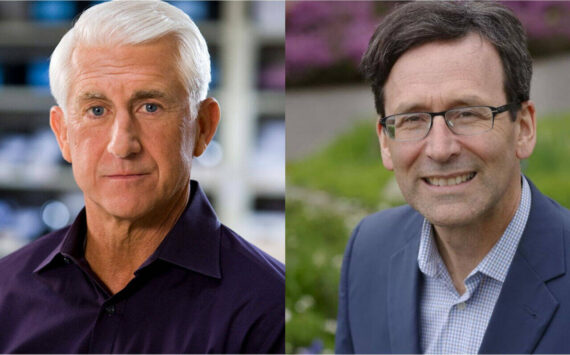By Morf Morford, Tacoma Daily Index
I see Teslas every day. There are at least four or five in my immediate neighborhood. I see them on every street and in every parking lot.
The Tesla company was, not long ago, the ultimate working symbol of innovation in everything from business model to automotive design to environmental awareness to resource responsibility. Driving a Tesla was like driving in the future. And then a funny thing happened – Tesla, instead of being the innovative vehicle company of the future became just another legacy auto maker.
Tesla commercials
Tesla’s CEO Elon Musk, who mocked legacy auto makers for spending money on paid advertising, is preparing to embark on an advertising campaign – jut like the other car companies.
Yes, Musk owns an ad-supported social media platform, but at best, Twitter is a limited, if not shrinking, platform.
Tesla prices
If you take note of Tesla prices, you can’t help noting that their prices are erratic – at best. Up one week, down the next. Market forces are as relentless as they are unpredictable. The demand for electric vehicles (EVs) has been growing dramatically – but so has the competition. Tesla, once the pioneer, is quickly moving into “your father’s electric car” territory.
Batteries
Batteries have long been the bane of EVs. Tesla is applying for permits to expand auto production in the hot China market (they expect to make 1.75 million vehicles a year at their Shanghai site) and produce the newer version of pouch type battery cells. Tesla currently depends upon cylindrical cells.
Whether an EV uses one battery, or five hundred, whoever owns the battery technology controls the market.
Your father’s production line?
Tesla’s proposed “unboxed” system for dramatically cutting vehicle assembly costs is either a revolutionary successor to the lean just-in-time Toyota Production System manufacturing discipline that dominated the auto industry for four decades – or a high-tech detour that will stick customers with vehicles that cost more they should or are impossible to repair. It depends who you ask.
In summary though, if your orders come through on time, just-in-time production saves costs on everything from storage to disposal costs of outdated inventory. But the slightest supply chain glitch can stymie the entire operation. Sometimes for months. Or more.
Marketing Teslas
To a large degree, everyone who wants a Tesla has one by now. Tesla’s market share has been high for at least the six years after the launch of their first high-volume EV, the Model 3.
But as we know, from every peak, literal or metaphorical, it’s all downhill from now on.
Thanks to rising competition, resource and supply chain missteps, among other things, the EV market is not what it was just couple years ago.
The next few years look even more convoluted – and demanding. Tesla has responded the way every other company does – by cutting costs (as in lay-offs) while investing in growth and new technology. Just like at every other “legacy” company – including auto makers GM, Ford, Mercedes and BMW.
Take me to your leader
Some say that the biggest problem Tesla has is their leader; Elon Musk.
Multiple articles in business journal have profiled Musk as the ideal model of what NOT to do. Here’s just one example of the Elon Musk approach to hiring.
Elon Musk, of course, has made a spectacle of himself across multiple fields. Once with gushing admirers proclaiming him a boy genius, “wunderkind” or entrepreneur of the year, most media outlets currently describe him as something like a grumpy, self-absorbed, opinionated old man.
Every purchase is, to some degree, an endorsement, and for several people I know, Tesla (and EV technology in general) is worth publicly endorsing, but Elon Musk isn’t.
If there’s anything Musk lovers and haters can unite on, it is that Elon Musk is no longer the leader he once was. Elon Musk went from the person who thought (and was told) he could do everything to the person that had to do everything – from hiring to planning space ventures, and much more.
A leader, above all, is someone who leads – who inspires others to do their best toward a common cause. And who is not reluctant to hire people smarter and more competent than they are.
Keeping the mission and focus of the company (or any group) front and center – and as a high, if not the highest, priority is the one sentence job description of any leader. If they don’t do that, nothing else really matters.






